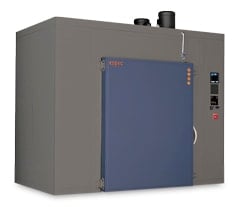Stimulation versus simulation
If you are reading this, you obviously are interested or are doing environmental testing. If someone asked you if you are simulating environmental conditions or stimulating failures, how would you answer?
On the surface, the difference seems obvious, and it is, but there are some details I would like to discuss.
SIMULATION is the act of artificially creating an environment to ensure your product will survive in the conditions you expect your customers to use it in. Cell phones, for example, should be tested at freezing temperatures to make sure the LCD display doesn’t malfunction and also tested hot to ensure that it doesn’t overheat. You can reasonably predict that both extremes will be seen by your product.
STIMULATION is the act of creating extreme conditions not normally seen by your product with the intention of causing failures that may not be normally seen, but can be related to eventual field failure. By subjecting a cell phone to a sudden temperature change you may cause solder cracks at poor joints. These same cracks may have taken months to normally occur.
Both create extreme environments and both are looking to catch failures, so they are quite similar. But it is hard to cause a solder crack by just running a “hot” test. Stimulation adds stress. Extreme temperature change is just one example of stimulation.
Simulation is a good first step to check the integrity of your design, while stimulation helps ensure long-term reliability.
There are three basic types of fast-rate temperature change stimulation:
How much stress is appropriate to stimulate failures? That depends on your product, your customer’s expectations, the operating environment, and your budget.
Related Products from ESPEC

Qualmark HASS Systems
Screen for known product weaknesses at production volumes
(Highly Accelerated Stress Screening)
- Six tables for maximum throughput
- -60 to 120°C at rates up to 60°C/min.
- Six-degree-of-freedom vibration system
- Acceleration: 5 - 40gRMS
Learn about HASS Series
 ESPEC North America, Inc. (Corporate office)
ESPEC North America, Inc. (Corporate office)


